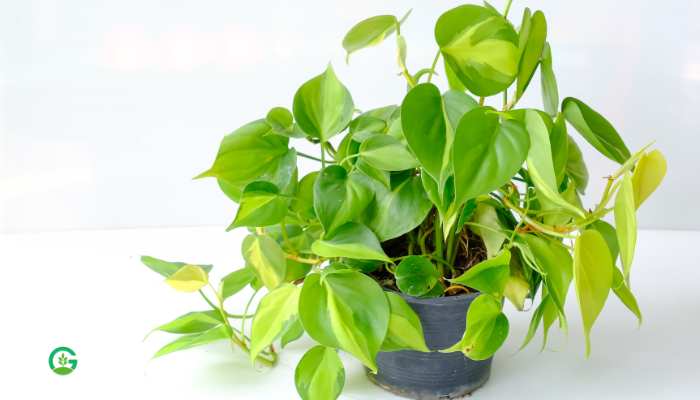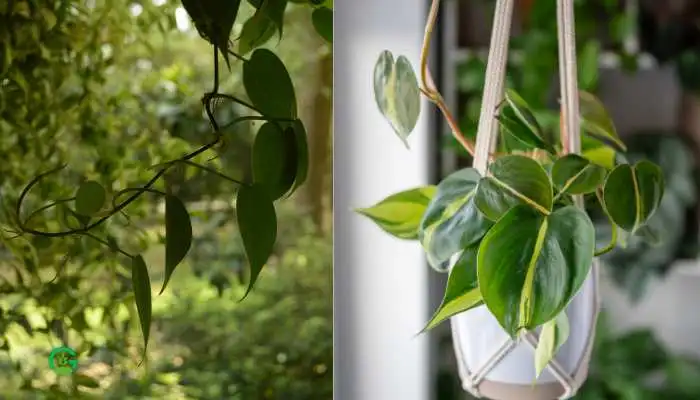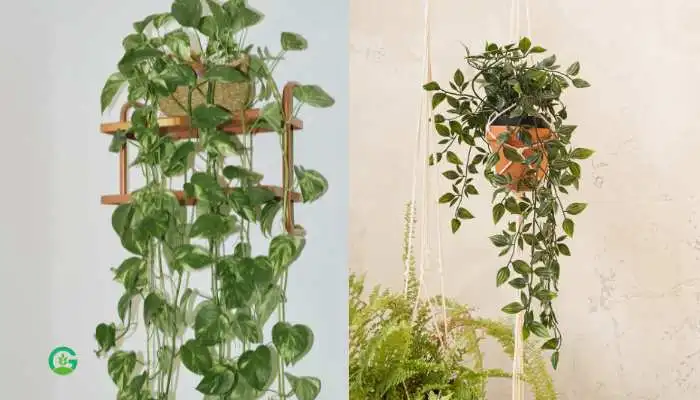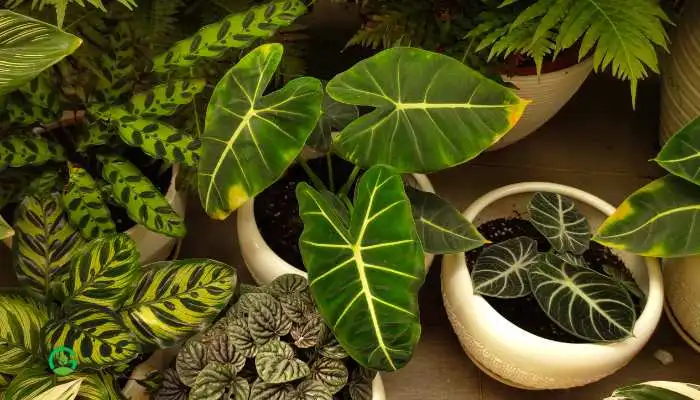Philodendrons are more than just houseplants; they’re companions that bring life to any space. With their lush green leaves and easygoing nature, the Philodendron Hanging Plant has become a favorite among plant enthusiasts and novices alike.
Whether you’re looking to add some greenery to your living room or enhance your office space, a Philodendron hanging plant might be the perfect choice. Let’s dive into everything you need to know about these charming plants.
Table of Contents
Introduction to Philodendron Hanging Plants
Philodendrons are a diverse group of tropical plants that are adored for their beautiful foliage and adaptability. These plants are part of the Araceae family and come in various forms, but the hanging or trailing types are particularly popular for their ability to cascade elegantly from pots or baskets. They are like the waterfalls of the plant world, bringing a sense of natural beauty and tranquility to indoor spaces.

Types of Philodendron Hanging Plants
There are many varieties of Philodendron that make excellent hanging plants. Some of the most popular types include:
Philodendron hederaceum
Also known as the Heartleaf Philodendron, this plant features heart-shaped leaves and is incredibly easy to care for, making it a great choice for beginners.
Philodendron brasil
This variety has striking green and yellow variegated leaves that add a pop of color to any room. It’s as if nature herself decided to paint on the leaves.
Philodendron micans
With its velvety, dark green leaves, Philodendron micans adds a touch of elegance and sophistication to any space.
Philodendron scandens
Known for its quick growth and large leaves, this variety is perfect for those looking to quickly fill a space with lush greenery.

Choosing the Right Philodendron for Your Space
When selecting a Philodendron hanging plant, consider the following factors:
- Space Size: Choose a variety that fits well with the size of your space. Larger spaces can handle more expansive plants like Philodendron scandens.
- Light Availability: Some Philodendrons require more light than others. Ensure your chosen variety matches the light conditions of your intended space.
- Personal Preference: With so many varieties available, pick one that you find visually appealing and that suits your decor style.
Caring for Your Philodendron Hanging Plant
Caring for a Philodendron hanging plant is straightforward, making it an excellent choice for both novice and experienced plant owners.
Watering Needs
Philodendrons prefer their soil to be kept consistently moist but not waterlogged. Here’s how to water them effectively:
- Check the soil: Before watering, check the top inch of soil. If it feels dry, it’s time to water.
- Water thoroughly: Water the plant until you see water draining from the bottom of the pot. This ensures the roots are well-hydrated.
- Avoid overwatering: Overwatering can lead to root rot. Ensure the pot has drainage holes to prevent water from accumulating at the bottom.
Light Requirements
Philodendrons thrive in medium to bright indirect light. However, they are also tolerant of lower light conditions, making them versatile for various indoor environments.
- Bright, indirect light: Place your Philodendron near a window with filtered sunlight. Direct sunlight can scorch the leaves.
- Low light: While they can survive in low light, growth may slow down, and leaves might become smaller.

Soil and Fertilization
Using the right soil and fertilizer is crucial for the health of your Philodendron.
- Soil: Use a well-draining potting mix. Adding perlite or orchid bark can enhance drainage.
- Fertilization: Feed your plant with a balanced liquid fertilizer every 4-6 weeks during the growing season (spring and summer). Reduce feeding in the fall and winter.
Pruning and Maintenance
Regular pruning helps keep your Philodendron hanging plant healthy and looking its best.
- Prune dead or yellowing leaves: This encourages new growth and prevents disease.
- Trim leggy growth: Cut back long, leggy stems to promote a fuller, bushier appearance.
Common Issues and Solutions
Even with the best care, Philodendrons can encounter some issues. Here are common problems and their solutions:
Yellowing leaves
This can be a sign of overwatering or underwatering. Adjust your watering schedule accordingly.
Brown leaf tips
Usually caused by low humidity or underwatering. Increase humidity by misting the plant or using a humidity tray.
Pests
Philodendrons can attract pests like aphids and spider mites. Treat infestations with insecticidal soap or neem oil.
Image | Product Name | Review | Price |
Benefits of Having Philodendron Hanging Plants
Philodendrons offer numerous benefits beyond their aesthetic appeal:
- Air Purification: They help filter toxins from the air, improving indoor air quality.
- Stress Reduction: Having plants around can reduce stress and improve mental well-being.
- Decorative Appeal: Their lush foliage adds a touch of nature to any decor style, making spaces feel more inviting and vibrant.
Decorating with Philodendron Hanging Plants
Philodendron hanging plants are incredibly versatile and can enhance any decor style.
- In the living room: Hang them near windows or place them on high shelves where their vines can trail down.
- In the kitchen: Add a touch of green to your kitchen by hanging a Philodendron in a corner or placing it on top of cabinets.
- In the office: Brighten up your workspace by placing a Philodendron on a bookshelf or desk.
Propagation Techniques
Philodendrons are easy to propagate, allowing you to expand your plant collection or share with friends.
Stem Cuttings
- Cut a healthy stem: Ensure the stem has at least one node.
- Place in water: Submerge the node in water and place the cutting in a bright, indirect light spot.
- Transplant to soil: Once roots have developed, transplant the cutting to soil.
Air Layering
- Choose a healthy stem: Make a small cut on the stem and wrap it with moist sphagnum moss.
- Cover with plastic wrap: Secure the moss with plastic wrap and wait for roots to form.
- Cut and plant: Once roots appear, cut the stem below the roots and plant it in soil.
Safety Considerations
While Philodendrons are beautiful, they are also toxic if ingested, making them a potential hazard for pets and small children.
- Keep out of reach: Place plants in areas that are inaccessible to pets and children.
- Educate family members: Ensure everyone in the household knows not to ingest any part of the plant.
Conclusion
Philodendron hanging plants are a wonderful addition to any home or office. With their easy care requirements and beautiful foliage, they bring a touch of nature indoors, making spaces feel more vibrant and inviting. Whether you’re a seasoned plant enthusiast or just starting, a Philodendron hanging plant is a perfect choice to enhance your living space.
FAQs
How often should I water my Philodendron hanging plant?
Water your Philodendron when the top inch of soil feels dry. Typically, this means watering every 1-2 weeks, depending on the indoor climate.
Can Philodendron hanging plants grow in low light?
Yes, Philodendron hanging plants can tolerate low light, but they thrive best in medium to bright indirect light.
How can I propagate my Philodendron hanging plant?
Philodendrons can be propagated through stem cuttings or air layering. Both methods are straightforward and effective.
What should I do if my Philodendron’s leaves turn yellow?
Yellow leaves can indicate overwatering or underwatering. Check your watering routine and adjust accordingly.
Are Philodendron hanging plants safe for pets?
No, Philodendrons are toxic if ingested. Keep them out of reach of pets and small children to avoid any health issues.





















1 thought on “Best Philodendron Hanging Plant”